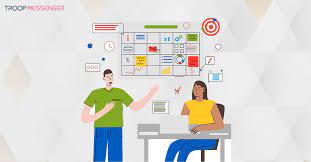
October 31, 2023
The world of work is rapidly changing, and organizations are realizing that the only way to stay ahead of the competition is by investing in their employees’ continuous learning. Continuous learning programs help employees acquire new knowledge and skills and improve their work performance. Implementing these programs, however, can be challenging, especially for organizations that don’t have the necessary resources and expertise in-house. That’s why, in this blog post, we’ll discuss some effective strategies for implementing a successful continuous learning program in your organization.
Define Your Learning Goals:
Before implementing a continuous learning program, it’s important to clearly define your organization’s learning goals. This involves identifying what knowledge, skills, and abilities your employees need to acquire to improve their performance and achieve the organization’s mission. Once you have defined your learning goals, you can design a learning plan that aligns with these goals.
Choose the Right Learning Delivery Method:
There are various learning delivery methods to choose from, such as classroom training, e-learning, on-the-job training, coaching, mentoring, and more. The right delivery method will depend on the nature of the learning content, the target audience, and the learning environment. For example, e-learning would be more suitable for employees who work remotely or have a busy schedule, while classroom training may be more effective for hands-on training.
Encourage Employee Participation:
Employee participation is crucial for the success of any continuous learning program. Employees should be encouraged to participate in learning activities and share their feedback on the program’s effectiveness. To encourage participation, you can involve employees in the learning program’s design, solicit their suggestions for improvement, and recognize their achievements and contributions.
Provide Adequate Resources:
Implementing a successful continuous learning program requires adequate resources, such as time, money, technology, and support. You need to ensure that your organization provides the resources necessary for employees to participate in learning activities, such as access to learning materials, training equipment, and workshops. Moreover, you can involve supervisors and mentors to provide guidance and support to employees throughout the learning process.
Evaluate the Learning Program’s Effectiveness:
Finally, it’s important to measure and evaluate the learning program’s effectiveness regularly. You can use quantitative and qualitative metrics, such as test scores, surveys, feedback, and performance indicators, to assess the program’s impact on employee learning and performance. Based on the evaluation results, you can make necessary adjustments to the program’s design and delivery, and ensure that the program continues to meet your organization’s learning goals.
Conclusion:
Implementing a continuous learning program is not an easy task, but it can be accomplished through careful planning and execution. By following the strategies we discussed in this blog post, you can design, deliver, and evaluate a successful continuous learning program that benefits your employees and organization. Remember, investing in your employees’ learning and growth is essential for staying competitive in today’s fast-paced work environment.
VALUE – “Investing in continuous learning programs is essential for organizations to adapt and thrive in the rapidly changing world of work.”













